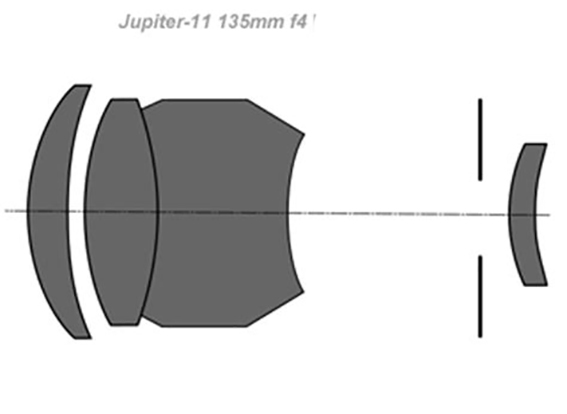1961 Jupiter 11 135mm f4.0


The Lens details of a series of images taken by Steve Cushing on mirrorless camera.
Fitting is a duel bayonet Rangefinder (RF) mount with a 34.85mm Flange Distance - this lens will fit and achieve focus to infinity mirrorless cameras but not DSLRs.
Lens History
Jupiter was one of the classes of lenses that were produced by lens makers of the former Soviet Union. The name was probably a classification for three-group or multiple-group lens constructions which included one very thick lens element (a "Jupiter" when compared to the other "planets"
The history of ZEISS mirrors German history and all of its highs and lows. It was founded as a business in 1846. World War I, the global financial crisis and World War II were years of ups and downs. Carl Zeiss Jena had become a Social-Democratic bulwark. From 1933 and through World War II Carl Zeiss supported the Nazi regime as did most major German industries. When World War II began in September 1939 there was an air of invincibility in Germany, and in keeping with traditional practice, Zeiss products proudly borne the makers trademark and city of origin of the product. Forced foreign labourers (Fremdarbeiter) were brought to work at Carl Zeiss Jena manufacturing facilities.
In 1945 the U.S. Third Army advance, and on April 13 the regimental combat team 80th Division cleared Jena where they found the Carl Zeiss factory complex. It had sustained what they described as "surprisingly little effective bomb damage"
After the defeat of Nazi Germany in WWII, in compliance with the Yalta agreements the U.S.military forces departed. In June or early July the Russian military forces occupied Jena and the remainder of what became East Germany (German Democratic Republic). Russians 'appropriated' the original optical equipment and designs from Carl Zeiss factory in Jena. Carl Zeiss know-how was one of the most prized possessions of the post-war era and helped accelerate innovation in the USSR's optical industry, By one year later, the Russians had evacuated much of the remaining technical and management staff and about 92% of the Carl Zeiss Jena manufacturing facilities to the east. But the Russian fear of possible further conflict with the western allies rendered moving any production capability into a more defensible Russian province a sensible strategic step.
Meanwhile in Germany there was now two Zeiss factories. The "Zeiss Stiftung von Jena" established at Heidenheim with the "Opton-Optische Werstatte Oberkochen GmbH" factory at Oberkochen on the banks of the Kocher River near Stuttgart. The Schott Glass Works subsidiary was located at Mainz.
Early 1970's tensions between the two firms between the two firms peaked (as they did between East and West) with each of both companies claiming the exclusive rights to the patents, trademarks and traditions of "Carl Zeiss". This culminated in a series of legal battles around the globe, among these was one resolved by U.S. Supreme Court granting rights to the name "Zeiss" to the West German Zeiss firm.
With much of the manufacturing equipment now in Russia Most of the early Russian lens designs were based upon Carl Zeiss designs. The Jena factory in the East continued its production under the Communist regime, but Russians also jump-started their own factories, most notably in Krasnogorsk (the KMZ factory) and later also expanded production to Arsenal Kiev, Litkarino, Lvov, Kharkov and Kazan factories. But KMZ remained the epicentre of the innovation and most original Russian designs were originated there.The lens I used for the sample images was made at Krasnogorsky Optical and Mechanical Factory (KMZ) in 1961. The first two numbers of the serial number show the version of manufacture on these lenses.
The Jupiter-11 135mm 4.0 is therefore a copy of a Zeiss lens, the Zeiss Sonnar 135mm 4.0.
This Russian lens is really cheap and yet gives wonderful rendition and bokeh. Quality control of these Russian lenses is not that of the pre-war Zeiss lenses, some are excellent others are not, but the optical format is the same.
Lens In Use
- This lens is made from aluminium which contributes to very low weight, but is also very good at attracting scratches. Its actual weight: 260 g
- Filter Diameter: 40.5 mm
- Number of Aperture Blades: 15 (rounded). Because of these 15 rounded aperture blades the highlights in the background stay round even on stopping down.
- Elements/Groups: 4/3
- Close Focusing Distance: 2.5 m which is not good. I have added a helicoid to my homemade adapter to bring this down.
- Maximum Magnification: 1:X
- Even on an overcast day you will encounter severe issues with veiling flare so you need to add a lens hood.
Summary
I just love this cheap lens, it light, easy to use and has great bokeh. My copy is a good one so be careful when buying these lenses and remember imperfections are important and necessary elements in creative photography. This is why I use vintage lenses alongside the pixel perfect modern ones.
For images using this lens click HERE
For general information on lens design and lens elements go to the homepage HERE